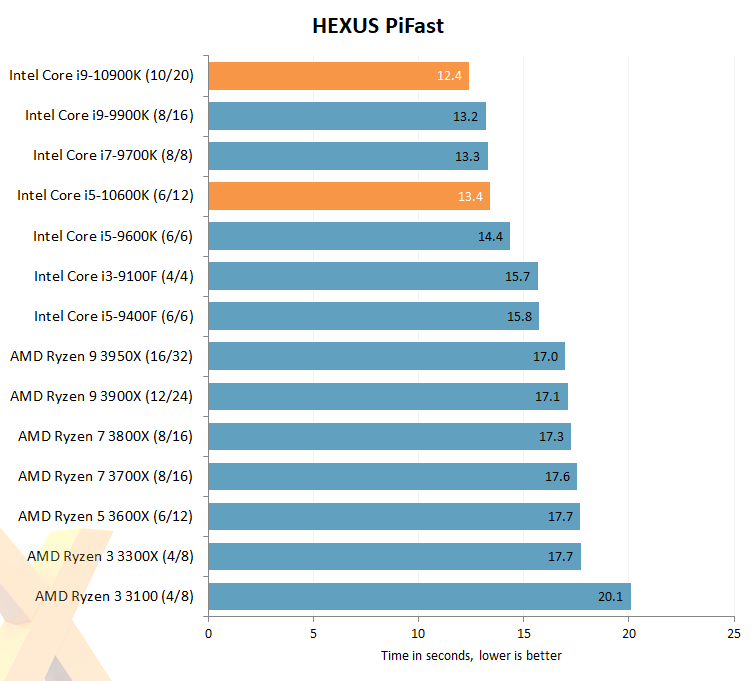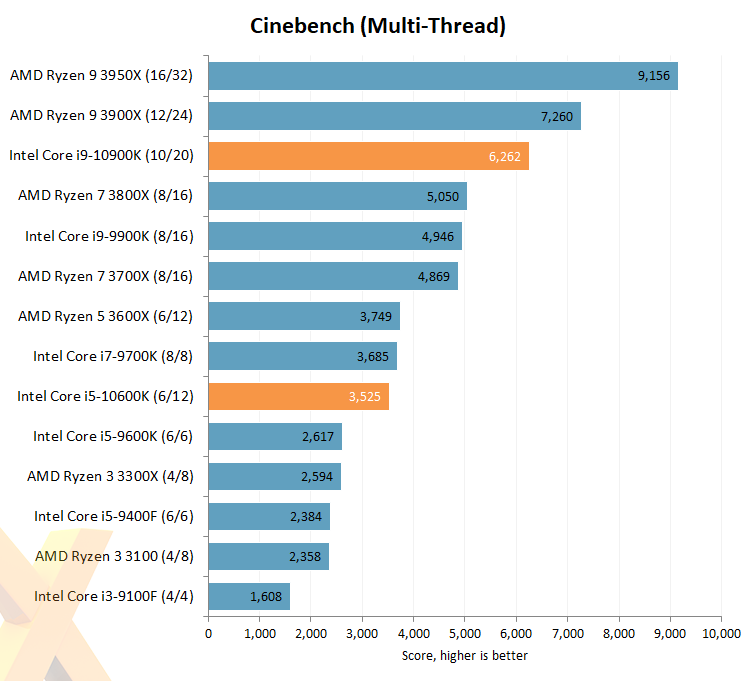CPU Tests

The higher frequencies of 10th Gen Core models obviously play well with light-load tests. Both chips hit their rated maximum speeds of 5.3GHz and 4.8GHz, too, which means class-leading performance for the Core i9-10900K.

An extra dollop of frequency pushes the single-thread Cinebench R20 score to the top of the charts. That said, AMD's pretty close behind the Intel head honcho.

Being 27 percent faster than the equivalent chip from the last generation would normally be a reason for celebration. Trouble is, the cheaper AMD Ryzen 9 3900X, flexing 12 cores and 24 threads, enjoys a 16 percent performance lead. Ryzen 9 3950X is in another league, frankly.
Looking across to i5-10600K, priced at $262 and firmly in the cross hairs of the also-cheaper Ryzen 5 3600X, performance is pretty close, as it should be considering the equal number of cores and threads.

The longer Blender Classroom test reinforces what we see in Cinebench. There's a decent improvement for the Core i9-10900K over its immediate predecessor, Core i9-9900K, thanks to an extra two cores and higher all-core frequency. That will play well for the value metric as both are priced at around $500.
Using a single fan on a Noctua NH-D15 cooler leads to a peak load temperature of 77°C for the 10900K and 71°C for the 10600K. The latter chip is almost five minutes faster than the last-gen 9600K. Why? Hyperthreading and higher all-core frequencies.
Peering over to AMD, it still has more performance than Intel's finest mainstream platform by dint of the 3900X and 3950X.
And remember that Intel is using considerably more power on the Core i9-9900K than the 125W TDP ordinarily suggests. The CPU package power is around 200W under Blender load.


